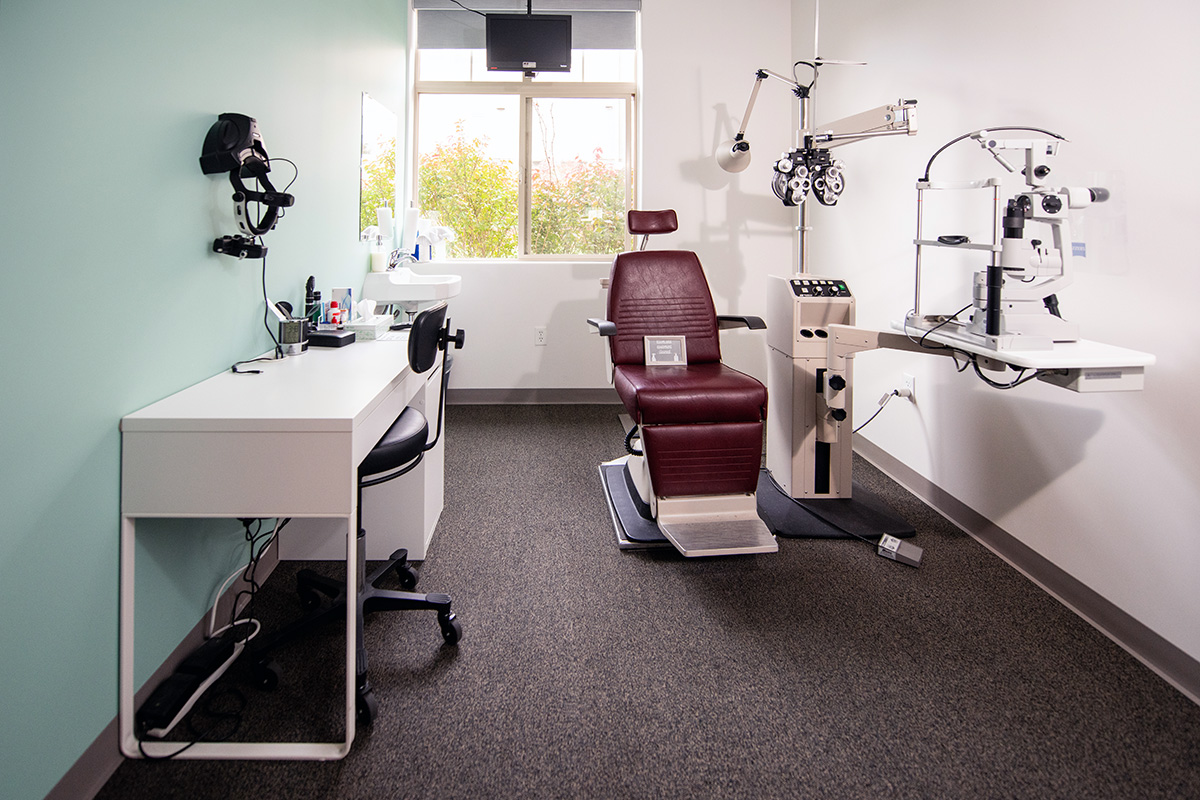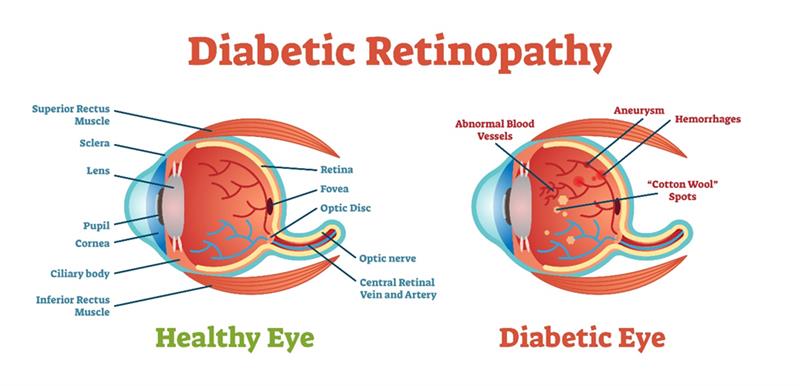Schedule A Diabetic Eye Exam
Diabetic Eye
Exams
Call Us
Hours
Location

Schedule An Appointment
Diabetic Eye Exams in Ken Caryl, CO
People with diabetes are at an increased risk of developing severe eye diseases and require specialized care to safeguard their vision and eye health. A diabetic eye exam detects early indications of diabetic eye disease and facilitates timely management before significant damage occurs.
If you have diabetes, you should receive a diabetic eye exam at least once per year. The eye doctors at the Eyecare Center of Ken Caryl have the expertise and state-of-the-art technology needed to perform diabetic eye exams and manage diabetic eye disease. We identify early warning signs of diseases and eye problems that can cause significant damage if left undetected and develop customized management plans based on your specific needs.
During the diabetic eye exam, your eye doctor at the Eyecare Center of Ken Caryl will dilate your eyes to thoroughly evaluate how diabetes may be affecting your vision and ocular health. They will also strongly recommend getting digital retinal imaging to monitor for stability or changes over time. If our eye doctor determines that a visit with a specialist is needed, the team will help you schedule your visit. Your eye doctor will also send your primary care physician for your diabetes a letter discussing any relevant findings from your diabetic eye exam.
Diabetic eye disease
Diabetic eye disease arises due to blood vessel complications.
High blood sugar can damage blood vessels in the back of the eye, resulting in fluid leakage and swelling, as well as the formation of new abnormal blood vessels, causing scarring or dangerously high eye pressure. Diabetic eye disease encompasses various conditions that can affect individuals with diabetes, including diabetic retinopathy, cataracts, diabetic macular edema, and glaucoma. These diseases can cause blurred vision and blindness and often display no early-stage symptoms.
Diabetic retinopathy
Diabetic retinopathy is a severe eye condition that can lead to extreme vision loss or complete blindness due to high blood sugar levels damaging the retina’s blood vessels. In the initial stages, diabetic retinopathy may show no obvious signs or symptoms. Vision changes might only occur once blood vessels start bleeding into the retina. The risk of developing diabetic retinopathy increases with the duration of diabetes. Pregnant diabetics or those who develop gestational diabetes are at high risk of diabetic retinopathy and should regularly visit an eye doctor.

Cataracts
Cataracts, characterized by a cloudy or opaque eye lens, result in blurred vision and heightened sensitivity to light. While common among aging individuals, cataracts can occur earlier in life in diabetics than in those without diabetes.
Diabetic macular edema
Diabetic macular edema, a complication of diabetic retinopathy, stems from fluid accumulating in the macula (the retina’s central vision area), causing swelling (edema) and possibly leading to vision issues or blindness.
Glaucoma
Glaucoma, or the “silent thief of sight,” refers to a group of eye diseases that damage the optic nerve and cause vision loss, often without early-stage pain or symptoms. Regular eye exams can detect glaucoma early when it is most effectively treated. Diabetics face an increased risk of glaucoma development.
Diagnosing diabetic eye disease
Our skilled eye care professionals utilize their expertise and advanced diagnostic technology to identify diabetic eye disease in its earliest stages. A diabetic eye exam requires pupil dilation for a clear view of the retina, optic nerve, and the blood vessels in the back of the eyes.
Preventing diabetic eye disease
If you have diabetes, there are several things you can do to prevent developing diabetic eye disease.
- Keep your blood sugar levels under control by following your doctor’s recommendations regarding diet, exercise, and medication. High blood sugar levels can damage blood vessels in the eye and lead to diabetic eye disease.
- Manage blood pressure and cholesterol. High blood pressure and elevated cholesterol levels can increase the risk of eye disease. Work with your healthcare team to manage these factors through lifestyle changes and medication, if needed.
- Schedule comprehensive eye exams at least once a year or as recommended by your eye doctor. Early detection of diabetic eye disease can help prevent severe vision loss or blindness. If you notice any changes in your vision, such as blurriness, floaters, or dark spots, report them to your eye doctor immediately.
- Smoking can increase the risk of diabetic eye disease and other diabetes-related complications. If you smoke, seek support and resources to quit.
- Eat a balanced diet rich in fruits, vegetables, whole grains, lean proteins, and healthy fats. Regular physical activity can also help manage blood sugar levels, blood pressure, and cholesterol.
- Adhere to your prescribed medication plan and consult your healthcare provider if you experience any side effects or concerns.
By proactively managing diabetes and maintaining a healthy lifestyle, you can significantly reduce the risk of developing diabetic eye disease and preserve your vision. Schedule an appointment with the Eyecare Center of Ken Caryl for a comprehensive diabetic eye exam today.
